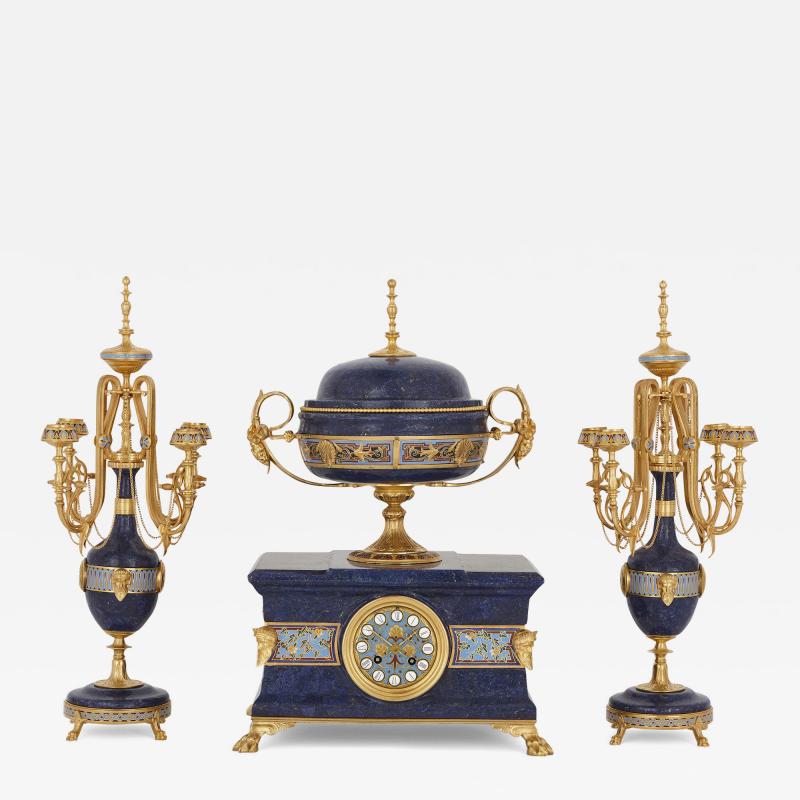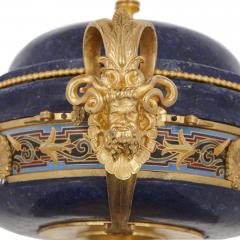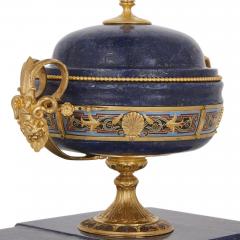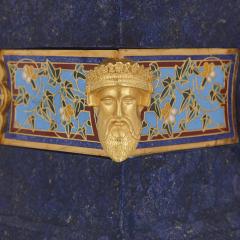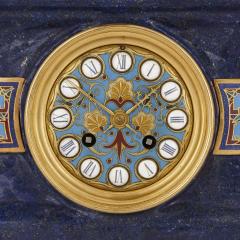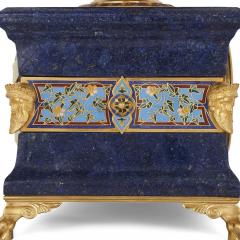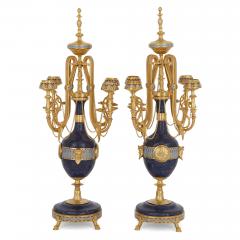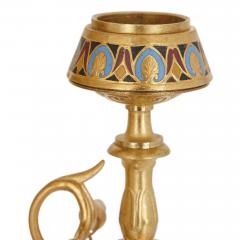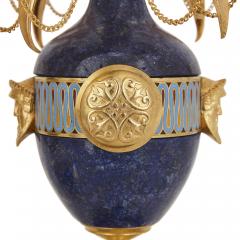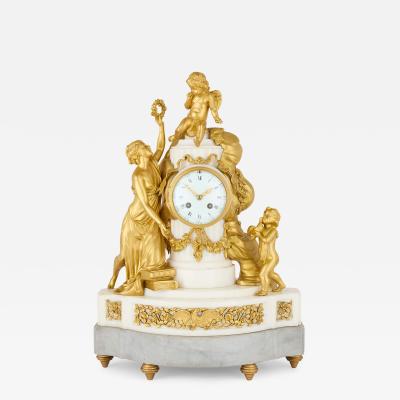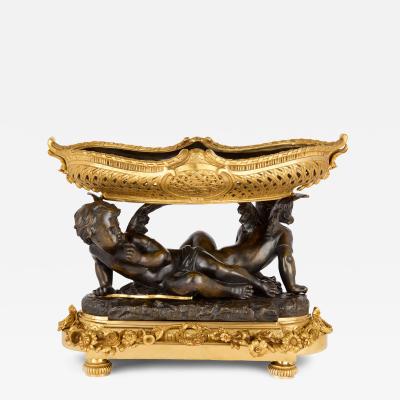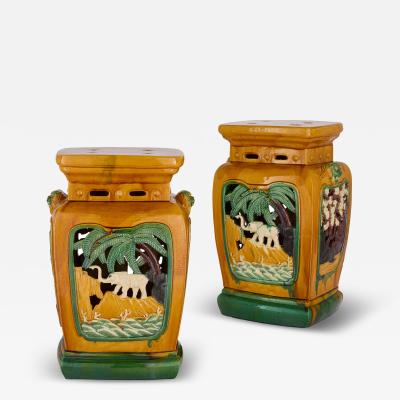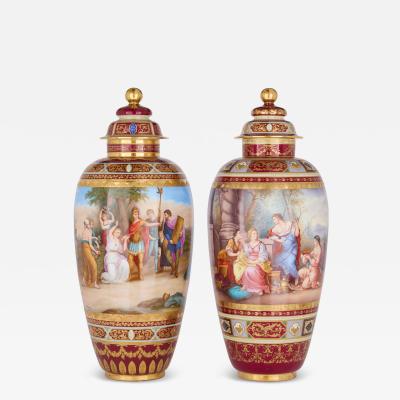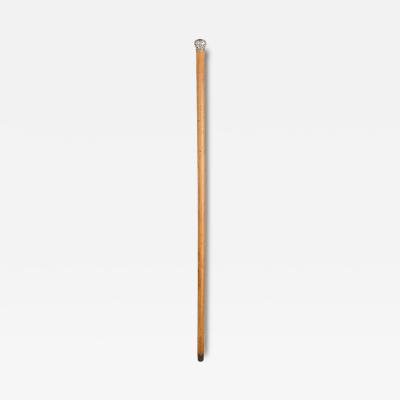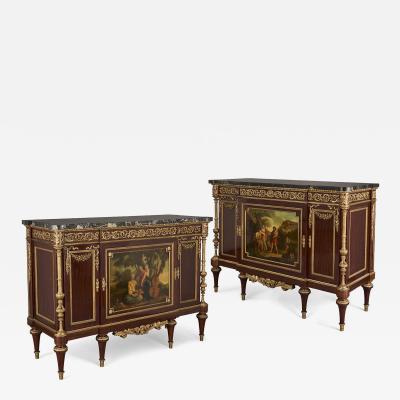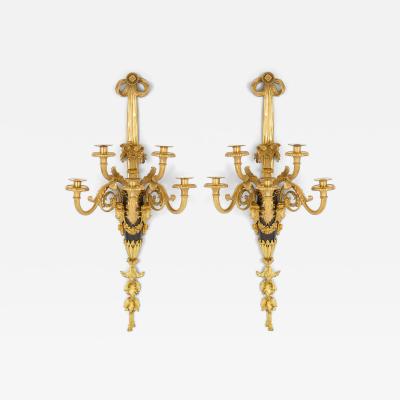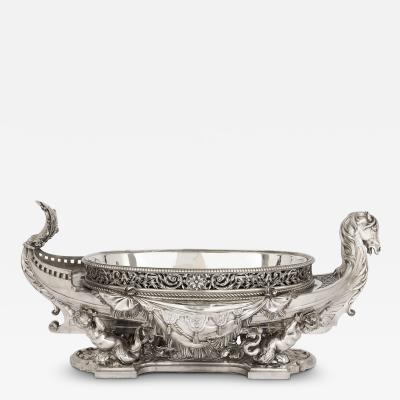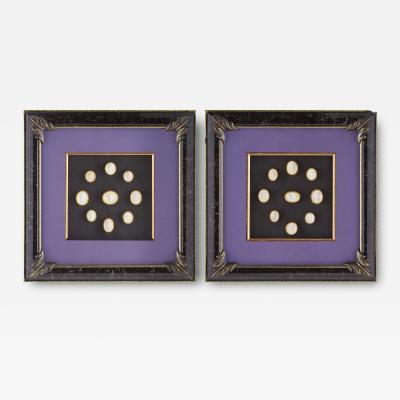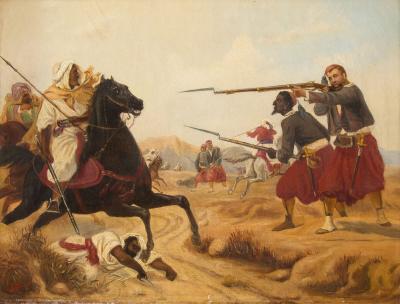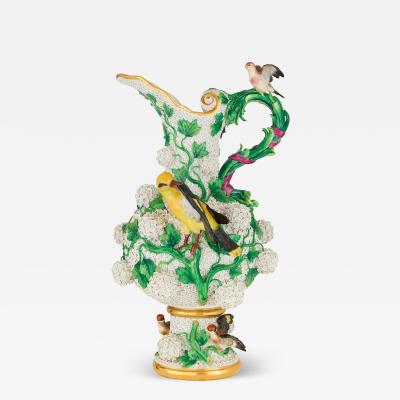Lapis, enamel, and gilt bronze garniture
-
Description
Lapis, enamel, and gilt bronze garniture
French, c. 1890
Clock: Height 50cm, width 35cm, depth 24cm
Candelabra: Height 51cm, width 18cm, depth 18cm
Inspired by the art and culture of Classical Greece, this three-piece garniture contains a mantel clock and two candelabra. The rectangular body of the clock is of lapis lazuli and is surmounted by a Grecian vase, also of lapis. The body of the clock is encircled by a band of champlevé enamel, which is wrought into a variety of scrolling forms, infilled with tones of yellow and green, and placed onto a blue enamel ground. At each corner of the clock body is mounted a gilt bronze classical mask, which complements the Grecian theme of the ensemble. The clock dial, which is formed of champlevé enamel, features Roman numerals.
The surmounted Grecian vase is similarly decorated, also being ringed by a band of champlevé enamel. From the stem of the vase spring two gilt bronze scrolled handles, which are mounted with gilt bronze Bacchic masks. The accompanying candelabra are likewise ornamented, featuring lapis bodies, gilt bronze mounts throughout, and instances of champlevé enamelwork. Each candelabrum holds four gilt bronze arms, which in turn support gilt bronze and champlevé enamel candle holders. -
More Information
Origin: France Period: 19th Century Materials: Enamel - Champlevé, Lapis Lazuli, Ormolu (Gilt Bronze). Creation Date: 1890 Styles / Movements: Classical, Traditional Dealer Reference #: 15715 Incollect Reference #: 764013 -
Dimensions
W. 13.78 in; H. 19.69 in; D. 9.45 in; W. 35 cm; H. 50 cm; D. 24 cm;
Message from Seller:
Mayfair Gallery, located in London’s exclusive Mayfair district, specializes in exceptional art and antiques from the 19th and early 20th centuries, featuring works by renowned artists and craftsmen. With a focus on quality and historical importance, our diverse collection unites exquisite pieces that exemplify unparalleled artistry. | jamie@mayfairgallery.com | 44.207.491.3435 |















